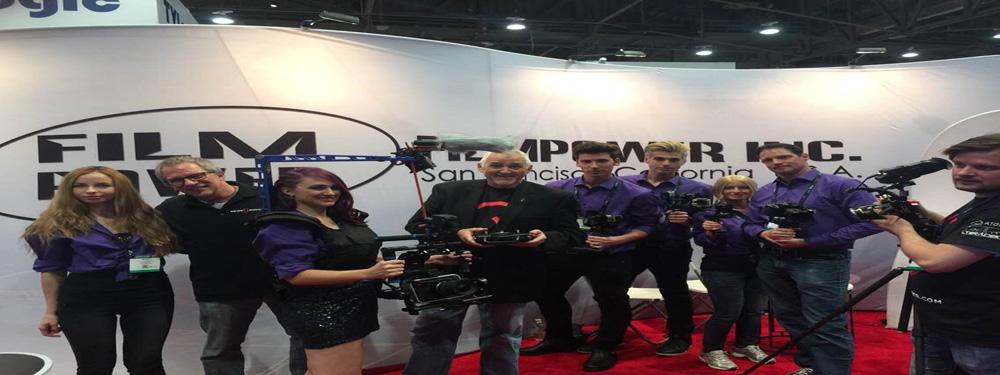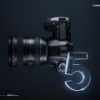Leaderboard
Popular Content
Showing content with the highest reputation on 04/17/2015 in all areas
-
3 points
-
Visioncolor Impulz Luts
Rinad Amir and one other reacted to Ed_David for a topic
So now it's been about 2 years since I started messing with Resolve and time after time, I find that Visioncolor Impulz luts are the best tools to get any footage - from DSLR to Alexa to look like film and in my eyes to look the best. Their webpage has an incredible manifesto about why using a LUT is good - is cool - is acceptable - and I couldn't agree more: http://www.vision-color.com/impulz/ The other luts I tried aren't - and I've tried them all - well the big ones and the new one but I don't want to mention their names because I don't want to say anything negative but the popular one has too much magneta in the highlights and has weird film pattern that looks artificial and the other one that just came out just has like 10 luts - not customized per each camera's view of what is acceptable for a film stock.2 points -
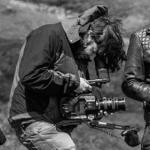
URSA Mini "on the cheap"?
Axel and one other reacted to Oliver Daniel for a topic
If low light is such an issue for low budget production - shouldn't more people actually consider buying a decent set of lights before upgrading to yet another camera body? Lights last for over a decade, camera body 2-3 years. I don't find low light much of an issue as I'm covered on all bases. Something a lot of the camera nerdy community forget is that lighting is No.1 for creating images (in aspects of tools).2 points -

Blackmagic Pocket Cinema Camera: does it make sense to buy it now?
Geoff CB and one other reacted to TheRenaissanceMan for a topic
Besides 12 bit RAW and 10-bit prores with 13 stops of dynamic range, better rolling shutter, and WAY nicer color?2 points -

LG Digital Cinema Display Review - 4096 x 2160 IPS impresses!
Xavier Plagaro Mussard and one other reacted to AaronChicago for a topic
When I watch TV on a plasma it just reminds me more of a theater experience. LEDs/LCDs are great but I feel like I"m watching an iPad with brightness to 100%. Just a preference I guess.2 points -

LG Digital Cinema Display Review - 4096 x 2160 IPS impresses!
Ivar Kristjan Ivarsson and one other reacted to HurtinMinorKey for a topic
Am i the only one who wishes they still made plasma?2 points -
KineMini 4k raw, first impressions and graded test footage
Daven reacted to silvertonesx24 for a topic
Being that there is such a lack of info online about this camera, I figured that I would see what I could do to provide info for those interested. I have no problem trying out Chinese manufacturing in general and have had good results overall. The video: http://www.youtube.com/watch?v=LxebYAeneaA First impressions with the Kinefinity KineMini after using DSLRs for professional work for ~6 years: Bought this for shooting anamorphic, which it is brilliant at, but I'm really liking what this might offer for commercial projects. The color latitude on this feels incredible. Dynamic range seems good, I don't really care to scientifically test it, but being able to control the highlights in camera is a nice professional feature.4k is remarkably clear. 1080p slow motion, not so much. Not sure why, but I get a lot of RGB mud in the shadows if you want to be picky on the image. It may be Cineform, I will have to test a few options.I really enjoy the development-type workflow with raw. File sizes are large, but really not that much worse than uncompressed 5D raw.Although it is much heavier (considering all accessories) than a DSLR setup, it's completely possible to run and gun and not that hard to get used to.I often cheated with exposure on a DSLR- using shutter angle instead of using a Vari-ND filter like you're supposed to. That doesn't seem to work with this camera, as a low shutter angle feels extremely video-ish for whatever reason.People think you're filming a movie, not taking pictures (this can be a good or bad thing)Can't wait to get the new speed booster for this thing. Super 35mm is OK, but I am used to depending upon my 35mm Zeiss (no longer a wide on s35) and 100mm Zeiss (far too telephoto for most of my shooting)1 point -
Before I got more serious into filmmaking, I created a custom tool to allow mapping any color to any other color. It used a 3D LUT, with trilinear or tricubic interpolation. The UI was in 3D, and 3D glasses were worn to edit the 3D cube lattice (editing was in stereo 3D). The UI provided 2D rendered slices through the 3D cube to help visualize the transform being created. The tool wasn't a retail product, but rather a tool used to figure out a solution to a specific problem. It was clear that while a 3D LUT is very powerful, the distortions created in the mapping can lead to 'color collapse', meaning many colors get mapped to the same value (banding, solarization, poor skin tones), and because the final values must be mapped back to a [0,0,0] -> [1,1,1] space, clipping or other techniques must be used, which can further create unwanted artifacts. 3D LUTs work best when the input is exposed in a way the LUT table 'expects' (per the design). Changing exposure before the LUT can radically change the output (or if shot too low/high). I purchased Film Convert and Impulz Ultimate, and while both are useful tools, I don't use them very often. I might use them more if they supported my (by far) favorite film stock: Eastman Kodak 100T 5248/7248. A 3D LUT cube can be converted to a 2D bitmap (and back to a 3D LUT): I used this method for an iOS app which needed fast real-time 3D LUTs. Here's a 3D LUT creator that works similarly to the custom tool I created (but with a 2D UI and 2D bitmap display): http://3dlutcreator.com/ When I watch movies on Netflix, when a scene has amazing color, I stop the movie and look it up on shotonwhat.com. I did this when watching Braveheart recently, on this scene: Shot with iPhone 5S on Sony XBR5 HDTV: The blue/magenta halo is not visible on the TV- iPhone 5S artifact. Screen shot on MacBook Pro in Safari (Netflix makes screenshots a challenge- most come out black; stopping on a good sharp frame is tricky as well. Here's a close sharp frame). Note the reduced brightness and contrast: HDTV image looks much better in real life!: Reading the Kodak paper on 5248 film: http://motion.kodak.com/motion/uploadedFiles/H-1-5248t.pdf , something interesting is apparent: sharpness varies with RGB (B is sharpest, followed by G, then R). Blurring the G and R color channels may help recreate the 5248 look (not possible with a 3D LUT alone). I stopped Men in Black II on a similar shot, with Will Smith in front and blue sky in back. Something magical about blues, skintones (pinkish) and 5248 film. The Last Samurai, The Fifth Element, Armageddon, Fight Club, American Beauty, Star Trek First Contact, The Shawshank Redemption, Baraka, and many more favorites- all shot on 5248.1 point
-

URSA Mini "on the cheap"?
Axel reacted to Oliver Daniel for a topic
Totally get your drift, but others don't. Some people out there think a low light camera means you don't need lighting, which is a very bizarre way of thinking when shooting. (Excluding the spontaneous and some documentary stuff). There are many "tests" on Vimeo where opinions are based on cameras where substantial lighting hasn't been used. How can a cameras image quality be tested when it hasn't been given the ingredients it needs? (Excluding low light tests). The A7S for example, creates by far it's best image under decent lighting at a low ISO. I've historically made loads of my projects with very little money to nothing. Lighting never gets thrown aside. Last year I made a zombie music video in a complete blacked out lunatic asylum. I lit the entire thing with just 2 small LED lights and a reflector. Sure, I had the Sony FS700 (decent low light) but if I didn't bother moulding the light then the video would of been a waste of time. A lot of us camera nerds are so obsessed with cameras that we spent all our money on cameras and not the juice that feeds the image. Low light is a fantastic feature to get more information and clean images - but knowing how to mould that light, in whichever form or source with decent composition is the key to amazing images. It's what sets you apart. (And your ideas of course!) So when this brings me back to the URSA Mini and what it's intended for, it seems perfectly fine. I'll always have some form of light kit, even if it's a bit of foil on a piece of cardboard and a little torch to shine on it.1 point -

LG Digital Cinema Display Review - 4096 x 2160 IPS impresses!
Orangenz reacted to Andrew Reid for a topic
What a moronic comment. What's the alternative - spend $10,000 replacing my Canon EF glass with Sony E-Mount, with most of them inferior or not even existing!?1 point -

Visioncolor Impulz Luts
kidzrevil reacted to AaronChicago for a topic
Exactly. I feel like Impulz is more of a starting point than a full look. I'll usually throw Impulz on an adjustment layer, on top. Then use Colorista to tweak each shot underneath.1 point -
1 point
-

Visioncolor Impulz Luts
Ed_David reacted to AaronChicago for a topic
I've been using these for a while as well, and love them.1 point -

URSA Mini "on the cheap"?
IronFilm reacted to Raafi Rivero for a topic
I own a small set of lights, but I'm speaking more from the perspective of an indie filmmaker than as someone doing gigs for clients. With most jobs, you budget to rent or use lights (and depending on the budget, a nicer camera, lenses, etc.). Pass it on to the client. Your task is to create a buttery-smooth corporate image, and that often requires a higher level of ordnance than most of us have in our kits. But with an indie film you're up to your own devices and there's more incentive to bring the total cost of production down because there's even less of a backstop financially. Doing a 300 ft. cable run to light up the facade of some building in the deep background of your shot vs being able to crank the ISO and only light your foreground subjects is a huge financial (gear + time + manpower!) advantage. I never suggested that we would work completely without lights, but the promise of low-light capability is that you can do less lighting, and less of the most costly type of lighting.1 point -
Capturing the best A7s skin tones
valery akos reacted to j_one for a topic
I've posted a thread about this topic some time ago. Everything about the a7s is amazing to me except it's color rendition and how efficiently it deals with white balance. I keep telling myself it's user error/experience, but the more videos I watch, I'm let to assume otherwise, and it's just made up for with decent grades to the footage to counteract any of the usual color quirks from the camera. Take a look at these tests of the a7s against the NX1 done by Andrew, which has been claimed to have excellent colors right out of the camera: 1) https://vimeo.com/115669917 2) https://vimeo.com/115647045 Of course, it depends on the look you're going for in your footage, but in terms of ONLY color accuracy, the NX1 is miles ahead. Of course, the a7s is flatter and has better highlight rolloff. But it seems to have an ugly yellow/magenta bias that pollutes other colors. This is why it's quite difficult to get accurate skintones out of the camera, slog or cine profiles. As someone once described before, the a7s looks like film stock. I'd agree. The sensor produces a beautiful image that the filmmaking community seems to love. But personally speaking, I might not always want the film stock look. I'd rather start with an accurate "close-to-real-life" representation of colors right out of camera, not an image that looks strange and works well with LUTs, but is difficult to get back to a natural look if needed. So, like a cinematographer is supposed to do, its time to do extensive camera tests in various conditions and locations. The following is a link I'm sure you've come across already; it's a popular compilation of popular camera picture profile settings for the a7s. Test extensively, figure out what brings you closest to accurate/lush/natural colors, then compensate the rest with quick grades. https://docs.google.com/spreadsheets/d/1rGxsgFMLk-oATs-05iN6fzb-uGkcgvLBIgJo_2GWvB8/edit?pli=1&hc_location=ufi#gid=0 Best of luck. I plan to buy back an a7s soon and do the same myself, hopefully. It really is a fantastic, special camera, and it's very possible to get accurate colors. It's just a question of consistency, considering how the auto white balance/set white balance tools and features are literally the worst I've used on any modern DSLR/mirrorless camera.1 point -
This camera should have supported SSD. Much cheaper with huge capacity.1 point
-

Filmmaking is Dead, Long Live FIlmmaking
Jimbo reacted to fuzzynormal for a topic
I love NAB, been more than a few times, but maybe it's my age and where I am in life, but the more stuff I see the more I'm starting to believe that the tech has maxed out for me. So I ask myself, when any semi-affluent middle-school kid has access to comparable IQ that I have, what's the point of chasing the best IQ? 12 stops of DR vs. 14 stops of DR. This color science vs. that color science. If not applied to a good story and a foundation of compelling shots, using the best isn't really much of an advantge. Love great new capabilities. It's exciting, but rarely do I leverage it in any similar exciting storytelling way. For far too long I've focused on playing with the cool toys in the sandbox. Ultimately, I'm thinking I would have been better off learning how to build a superior sandcastle. All one has to do is wander around Vimeo to see a bunch of decent looking IQ and lousy filmmaking. And god forbid you're on a film festival selection committee. So much stuff looks great these days, you're forced to sit through feeble storytelling until you realize the narrative isn;t going to say anything remotely interesting, is just a bunch of hoary tropes, and the story doesn't come close to matching the imaging. Dang near everybody has great IQ devices...and if they don't they will soon...even if they're not actively searching it out to acquire it. It will come with their phone, watch, eyeglasses, pocket drone, or whatever. For me it's time to ignore the camera and go back to the concentrating on ideas and story. That skill is truly where any advantage in this career will allow advancement.1 point -
If capturing good images is your primary strength, you should indeed be terrified because all tech is making such processes easier for everyone. As I mentioned before, Instagram pretty much killed photoblogging for me. But if art and storytelling are your strength, you have nothing to worry about, - all those well-shot videos on vimeo with nothing to say are just dead fish washing up on the beach...it doesnt diminish the real thing. Increased technological efficiency has cannibalized tens of millions of jobs in the industrial world and will continue to do so.1 point
-
New Veydra Mini Anamorphic 2X Project
Julian reacted to Caleb Genheimer for a topic
Yeah s35 would seem like a no-brainer. M4/3? Very limited market. A lens needs to cover s35 and be long FFD for me to seriously consider it a long-term piece of kit.1 point -

URSA Mini "on the cheap"?
andrgl reacted to Raafi Rivero for a topic
Low-light ability is fuel for a low-budget production. We absolutely must learn the low-light capabilities of the Ursa Mini before jumping in. But, to me, it's worth paying the extra $2k for the 4.6k sensor, no matter what. That regular-old 4k sensor isn't worth the trouble. That said, the one sample video didn't look that bad in the couple of darker scenes. Not as worried about the ND thing -- they would have been a huge bonus, of course -- but if you're shooting with a matte box you can always drop in filters. And if you're shooting without a rig and not swapping lenses too much then use vari-ND filters. I have a couple 77mm ones and use step-up rings in case they don't fit whatever lens I'm using at the moment. It does slow you down to unscrew and screw them on to different lenses, but it's not a deal-breaker. CFast media is a real bummer, though I suspect prices will come down soon enough.1 point -
Rook, thank-you so much for restarting this thread and also the link to Boyd Hobbs' very informative writeup! I love the look of the FM module + cinelux but have yet to use it with a taking lens shorter than the 58mm (Helios). Using 15mm LW rods, setup is very straightforward, but swapping out the taking lens is a real pain. Also, except for cinelux I had little luck with my other anamorphic adapters. I was looking forward to using my Isco ultra star. :/ Quite intrigued with Boyd Hobbs' very clever solution. The pl mount option is extremely appealing to me since I recently acquired a Sony F3 - hope BH is willing to share his 3D design. Thanks again, Marco1 point
-
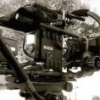
A7S no successor at NAB 2015 ?
Raafi Rivero reacted to j.f.r. for a topic
+1 TheRenaissanceMan has no idea what he's talking about...... Iso performance is the #1 thing for Independent Filmmaking and working with a budget. The difference of using 3 lights vs 6 is huge or the difference in wattage from 650watts to 300 is basically cutting everything in half. People who have not used both of these cameras simply cannot comment. I owned a GH4 and Sony A7s, GH4 after iso 800 is basically a noisy image and something you definitely do not want to use as you lose even more dynamic range and are introduce all kind of artifacts in your image. You can use a Sony A7s with a perfectly clean image all the way to 6400+ , I mean PERFECTLY clean image like shooting the GH4 in lowest iso setting. Secondly we have dynamic range, GH4 isn't even close. The ONLY people who say different are those protecting their camera name brand and those who simply never used a Sony A7s. I will say it time and time again, the A7s is simply the best tool in it's price range, point blank period. I suggest people to rent one before commenting any further.....1 point -
I think it's handy - not 'huge'. I've shot a lot of night stuff on Alexa, even while owning an A7s. It's super handy to have a little camera that has superb ISO performance and allows you to steal shots or whatever. Yes, it's freedom etc etc. But I've never lit a night shoot, then had my crew mount a lens on an Alexa and looked at it and thought 'man, I wish I was shooting this on my A7s' nor have I ever thought 'I reckon if I didn't light this and just used my A7s at 12500 ISO, it would look equally as good'. I love my A7s. But if someone said to me 'would you rather shoot A7s and never be allowed to use lights, or shoot with something else and use as many lights as you want' I am going to pick lights, every time. Put your time and effort (and money) into lighting your scenes - or pushing your Producers to get you some lights. It will make a much bigger difference to the way your images look.1 point
-
My first shots with the NX1
Christina Ava reacted to Peter van der Wel for a topic
Hi, I recently bought the Samsung NX1. Mainly due to this website, so many thanks for that! This camera is a major upgrade for me. I had a bridgecamera of Sony which I really liked (DSC-HX100v). Having the NX1 now, I am really happy about my choice. I can make beautiful photos, but also beautiful movies during my holidays. I have made a short movie with standard settings, just with the purpose of getting to know the NX1. It's made in The Netherlands, Hoek van holland: Now I should play more with different settings. I think I should adjust the contrast. Please let me know your first opinion of the movie :-) Peter1 point -

LG Digital Cinema Display Review - 4096 x 2160 IPS impresses!
leeys reacted to TheRenaissanceMan for a topic
Production monitors didn't use Plasma because you can't get smaller than 42", can't display larger than an 8-bit color space, and must use dithering to produce proper tonal variations. Many plasma panel image tests have shown models that are almost 100% Rec709 accurate, so I'm not sure where you're coming from here. I'm incredibly excited for the dawn of affordable OLED, even if they don't render motion as well as plasma. Perfect viewing angles, perfect uniformity, perfect blacks, excellent color accuracy.1 point -
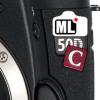
LG Digital Cinema Display Review - 4096 x 2160 IPS impresses!
Xavier Plagaro Mussard reacted to Julian for a topic
In my experience it looks just as good as on a native 1080p screen.1 point -
LG Digital Cinema Display Review - 4096 x 2160 IPS impresses!
Xavier Plagaro Mussard reacted to anchoricex for a topic
Probably a stupid question... but how bad does 1080p stuff look on a 4k monitor? I'd like to get a 4k monitor to really view 4k content, but I anticipate doing a lot of 1080p work indefinitely still, and 4k here and there.1 point -
My earlier essay on this topic. We live in strange age. We are being overloaded by images of different kinds every minute or even seconds. We live in a world which is being mediated or put in Baudrillard term - the world is being simulated. The capitalist' democracy made all gear (cameras, recorders, cellphones with cameras) available to the great number of people. It might sound like a dream for all those artist they struggled to get their gear only a dacade ago. Thus, it is not suprising at all that so many people try their hand at film-making these days. But this great number of people engaging in moving images can be in some ways counter-productive as well. The recent digital revolution changed the film industry on all levels. You do not need to buy a filmstock and pay for its developement anymore! You just buy a memorycard and you can record as long as your memorycard is capable of. You do not have to be worried about unaccurate exposition and unprecise framing. You can easily fix it during editing or simply reshoot the scene again and again until you are satisfied with it. You can change the sensitivity of your "film" by pressing a button. You have immediate preview of your footage. And so on. It is clear that all these new improvements help film-makers to cut down a budget of their film. The same regards the distribution circles. That means film-makers today do not have to fight for their place on silver screen at cinema. In the age of internet we can easily distribute our films on-line and share them with friends and new audiencies. We can say that since digital revolution to produce and distribute a movie has never been easier and cheaper. And one would expect that these new conditions will have wholesome influence on young amateur cinema. But unfortunately instead of more progression on the field of moving images we can encounter doldrums and seal off form of young cinema. These problems are not new and unknown to filmmakers' community. In 1959 Jonas Mekas complained about young cinema of his age. He argued that those films are made with money, cameras and splicers instead of with enthusiasm, passion, and imagination. Even though film cameras and splicers are not being used anymore as they have been replaced by digital cameras and computing video editors, the lack of creativity and enthusiasm is still(!) striking. As in 1959 we can encounter that young aspiring film-makers are only preoccupied with gear instead of with a creativity and search for new ways of expression. I do not dismiss the importance of technique and its aesthetical influence and importance on film’s image. But the shorts of today’s young film-makers could be described as over-technical and over-professionalized. One of the cause of this problem is wrong inspiration. All these young film-makers try to imitate the “big” cinema. This imitation of hollywoodian aesthetic is wrong because it blends two absolutely different approaches to cinema. The most powerful weapon which amateur film-maker posses is its freedom because he is outside of traditional circles of production and distribution. Unfortunately most of them do not realize this fact and try to break in or imitate these circles. And so they are raping theirs own film roots and independency. This whole approach is not only wrong but idiotic as well. In a case of “big” cinema the following words of Guy Debord are relevant more than for any other human activity: "The spectacle is capital to such a degree of accumulation that it becomes an image.” Put it in another words the capital is the main source of hollywood aesthetic and intersection of the whole process of making a movie. Money is primary concern of Hollywood, not the creativity and search for new ways of expression. It is well known that Hollywood has traditionally been mediocre in its form. While so-called Off-Hollywood cinema, avant-gard, independent and amateur film-makers were experimenting with film forms. One of the reason is "because we can” and they do not give in the dictate of capital and public acceptance. Freedom and need to create must be the primary motivation of independent film-makers. But all the camera panning, over-stable shots, sliding, flawlessly pure image and seamless editing which are being used so often by young film-makers create polish and slick films and this aesthetics has nothing to do with freedom. It is based on false and artificial aesthetic of Hollywood cinema. Such a form adopted by young independent filmmaker is imprisioning him in corrupt world. It is smoothing the edges of his very unique way of seeing a life. From a free and independent film-maker he has become just a worker of cinema who is not fulfilling his true inner vision but the expectation. One does not have to be Stan Brakhage or be in pursuit of destruction of every possible convention to call himself an author. This approach would not be good either. The most important attribute of film-maker is to be aware and genuine. Thus it is crucial to avoid “making”. The only right way is to film. Jonas Mekas was calling for new generation of film-makers, and I’m calling the new generation to stop “making" and begin to film. To pursue their inner and sublet feelings and visions.1 point
-
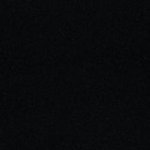
Blackmagic Micro Cinema vs Studio Camera - What are the differences?
IronFilm reacted to Xavier Plagaro Mussard for a topic
When I saw the Pocket in person I felt the LCD was shit. So it's better to make smaller cameras and you choose your LCD! Black Magic is really proving to be a forward-looking company! Five years ago they weren't a camera company at all and now they are!1 point

